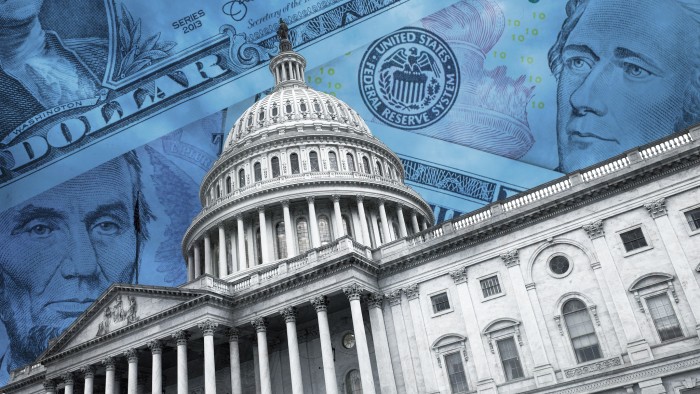Wall Street stocks rise after tame US inflation reading

Simply sign up to the Equities myFT Digest -- delivered directly to your inbox.
The US blue-chip stock index rose on Wednesday after data showed that an expected jolt of inflation in the world’s largest economy has not yet materialised.
Inflation expectations have been heightened by the prospect of President Joe Biden’s $1.9tn coronavirus relief package, which received final congressional approval on Wednesday afternoon.
Data showed consumer prices rose 1.7 per cent in February from the same month in 2020, in line with economists’ expectations. The gauge had risen 1.4 per cent in January.
The underlying measure of price rises, which strips out food and energy, rose 1.3 per cent on a year-on-year basis, down 0.1 percentage point compared with the previous month.
Wall Street’s blue-chip S&P 500 share index gained 0.6 per cent. The Nasdaq Composite edged down 0.04 per cent, a day after the technology-focused benchmark’s biggest rise since November.
The yield on the 10-year US Treasury, which has climbed from about 0.9 per cent at the start of February, fell 0.01 percentage points on the day to 1.52 per cent.
Inflation, which makes bonds less attractive as it erodes the value of their fixed-interest payments, is expected to climb further in March and April in the US, partly because of a marked economic rebound after the pandemic sharply reduced inflation a year ago.
It was “unlikely that the big inflation moment” would have come on Wednesday, said Savvas Savouri, chief economist and partner at UK hedge fund Toscafund,
“It is coming in the months ahead,” he said, adding that the reopening of the economy combined with heavy stimulus spending meant there was “going to be a big inflationary shock as too much money chases too few goods and services”.
The world’s largest sovereign debt market passed a critical test on Wednesday, after a smooth auction of new Treasury debt. Investors bought $38bn of 10-year notes at a yield of 1.52 per cent, helping in part to alleviate fears over a lack of demand for incoming supply. Still, investors expressed unease ahead of Thursday’s $24bn sale of 30-year bonds.
“Tomorrow’s bond auction is still going to face a tricky set-up, however, as the added duration may be problematic for the market to take down,” warned Thomas Simons, an economist at Jefferies.
This uncertainty has also clouded the outlook for the US dollar, which influences a range of other financial assets.
Mimi Rushton, Barclays’ co-head of global forex sales, said her clients were “very clearly” moving money out of emerging market assets and back into dollars. Rising Treasury yields, the benchmark for global debt costs, would make loans more expensive for developing nations that borrow in the US currency.
On the other hand, noted Rushton, Federal Reserve chairman Jay Powell had firmly signalled that the central bank had no plans to withdraw its $120bn-plus of monthly asset purchases that have kept financial conditions loose throughout the pandemic.
“The market is by and large ignoring what the Fed is telling it and the question is how long this will go on,” said Rushton.
The dollar index, which measures the currency against a basket of peers, traded flat after the inflation data. The euro was also steady, purchasing $1.1907, as investors awaited clues from the European Central Bank on Thursday about how its policymakers planned to deal with rising bond yields in the eurozone.
In Europe, the regional Stoxx 600 equity index closed up 0.4 per cent, while the UK’s FTSE 100 lost 0.1 per cent and the CAC 40 in France climbed 1.1 per cent.
Comments